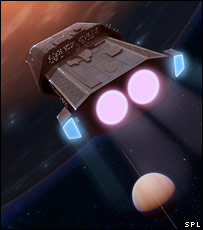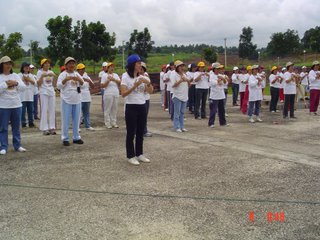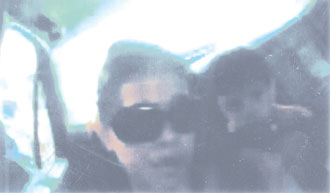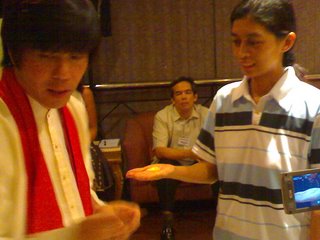
'Cloaking device' idea proposed
By Paul Rincon BBC News science reporter
The work brings science fiction closer to science fact - just a littleThe cloaking devices that are used to render spacecraft invisible in Star Trek might just work in reality, two mathematicians have claimed.
They have outlined their concept in a research paper published in one of the UK Royal Society's scientific journals.
Nicolae Nicorovici and Graeme Milton propose that placing certain objects close to a material called a superlens could make them appear to vanish.
It would rely on an effect known as "anomalous localised resonance".
If the speck of dust is close enough it induces a very aggressive response in the cloaking material
Professor Sir John Pendry, Imperial College London
However, the authors have so far only done the maths to verify that the concept could work. Building such a device would undoubtedly pose a significant challenge.
Starting small
Cloaking devices are a form of stealth technology much favoured by Star Trek baddies such as the Romulans and Klingons.
The complex mathematical phenomenon outlined by Milton and Nicorovici closes the gap a little between science fiction and fact.
The phenomenon is analogous to a tuning fork (which rings with a single sound frequency) being placed next to a wine glass. The wine glass will start to ring with the same frequency; it resonates.
The cloaking effect would exploit a resonance with light waves rather than sound waves.
The concept is at such a primitive stage that scientists are talking only at the moment of being able to cloak particles of dust - not spaceships.
In this example, an illuminated speck of dust would scatter light at frequencies that induce a strong, finely tuned resonance in a cloaking material placed very close by.
The resonance effectively cancels out the light bouncing off the speck of dust, rendering the dust particle invisible.
One way to construct a cloaking device is to use a superlens, made of recently discovered materials that force light to behave in unusual ways.
Vanishing point
Professor Sir John Pendry, of Imperial College London, who helped pioneer superlenses, said: "If the speck of dust is close enough it induces a very aggressive response in the cloaking material which essentially acts back on the speck of dust and forces it to stop shining.
"Even though light is hitting the speck of dust, scattering of the light is prevented by the cloak which is in close proximity," he told the BBC News website.
The authors of the paper argue that the cloak needn't just work with a speck of dust, but could also apply to larger objects.
But they admit the cloaking effect works only at certain frequencies of light, so that some objects placed near the cloak might only partially disappear.
"I believe their claims about the speck of dust and a certain class of objects. In the paper, they do give an instance about a particular shape of material they can't cloak. So they can't cloak everything," said Professor Pendry.
"Nevertheless, it's a very neat idea to get this aggressive response from the material to stop tiny things emitting light."
The Imperial College physicist agreed this particular concept had potential military uses: "Providing the specks of dust are within the cloaked area, the effect will happen. A cloak that only fits one particular set of circumstances is very restrictive - you can't redesign the furniture without redesigning the cloak."
Details are published in Proceedings of the Royal Society A: Mathematical, Physical and Engineering Sciences.
Paul.Rincon-INTERNET@bbc.co.uksource:
http://news.bbc.co.uk/1/hi/sci/tech/4968338.stm









